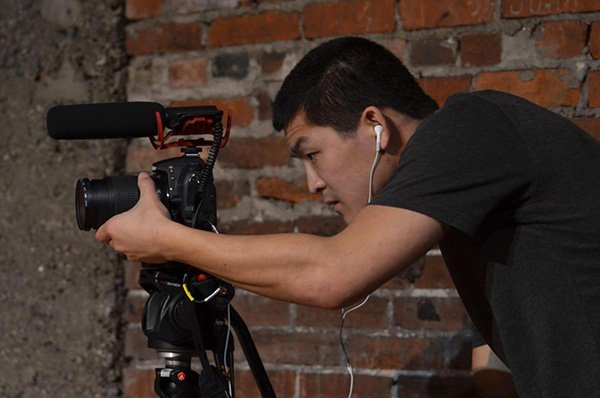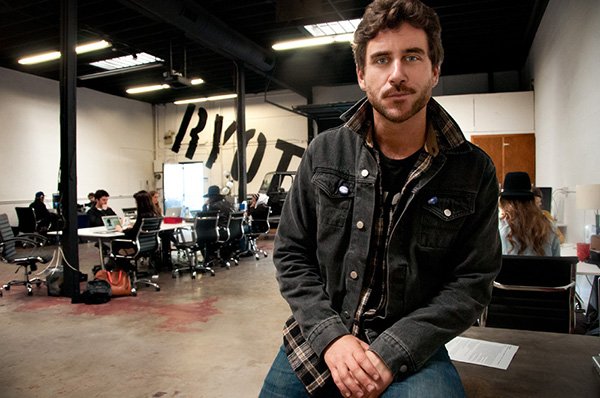The original English author, Taylor Nakagawa, is a graduate student at the Missouri School of Journalism. He is also an emerging media researcher at the Associated Press. His current research topic is VR news. This article is a survey report on VR news ethics conducted by Taylor Nakagawa and Reynolds School of Journalism.

The six respondents were:
Bryn Mooser - Bryn Mooser, Founder of RY News Studio RYOT
Jenna Pirog--New York Times VR editor, VR documentary "The Displaced" founding member
Jeremy Gilbert--Strategic Director, Washington Post
Kelly McBride--Media Ethics Scholar
Deniz Ergürel - founder and editor of VR news media Haptical
Sarah Hill - Chief Editor of StoryUp
Recalling 2016, we seem to find that VR is gradually becoming the mainstream of the American press. From the acquisition of RYOT by the Huffington Post in April to the launch of the Daily 360 column of the New York Times in November, this leaping development of the media industry requires us to update the awareness of news ethics in a timely manner.
In 2015, former Associated Press editor Thomas Kent put forward several "ethical reality test" topics, including industry competition perspective, picture authenticity, and the goal of VR content presentation. With the full penetration of VR news, journalists seem to be aware that both the industry and the practitioner need some rules. We interviewed six industry leaders on these topics to see how they intend to respond to this change.
Change in the role of journalist
On this topic, we had conversations with several practitioners from the New York Times, Washington Post, RYOT Studios, StoryUp, and Haptical, and we learned a lot of different views.
Because each audience can freely choose the viewing angle in the spherical screen, the reporter becomes the center of the narrative content. Journalists can continue to play the "participant" role or become a "spectator." However, when communicating news events, the setting of seats, the participation of respondents, and the acquisition of voice will all affect the performance of the entire news narrative.

RYOT co-founder Bryn Mooser
RYOT co-founder Bryn Mooser said in an interview: "In fact, I also want to know what the relationship between respondents and reporters in VR is. In addition, for the audience, they can see everything. This is also our Frequently considered issues."
Jenna Pirog, a VR editor for the New York Times and one of the founders of the VR documentary “The Displaced,†said: “We will continue to use VR for various attempts, and VR will also be the most objective media. Afterwards, we will continue to use the “bystander†perspective for reporting, but reporters should not worry that this will make them lose their initiative in collecting material.â€
Pirog also said: "Some journalists will feel that they are going to be down by the time when they watch VR. I never think so. We are still exploring the VR narrative methods, but it is certain that even in the era of VR news, The reporter will also play an important role."
Screen integrity
In all interviews, we obtained a consensus that the panoramic video in the news should not be deliberately created. Just like the standards of broadcast news, journalists have no right to artificially shape interview content, nor should they become active roles in news narratives.
Jeremy Gilbert, strategic director of the Washington Post, said: “The rule we set is that we don’t “direct†people or scenes, and we wouldn’t encourage people to behave in other ways before the camera. We’ll do our best to ensure that we’re shooting a panoramic video. True, we will not place the camera there and guide the event party to perform again."
Providing situational experience is one of the most important obligations of media people to the public. But for now, even without panoramic video, it is difficult to achieve this kind of experience without narration. Kelly McBride, a media ethicist at the Point Institute, believes that bringing the audience to a completely unfamiliar environment requires more explanation.
Unlike other media, virtual reality has been shown to be a special portrayal of personal life so that each audience can feel immersed, not just passively accept news content. In order to make the audience's experience more complete and complete, McBride also suggested that it could be added to the 360° news as an “external chapter†explaining some content that may be controversial.
Deniz Ergürel, founder of VR news media Haptical, said: “Reporters should also rethink the protection of personal privacy in VR news. There is no “behind the scenes†in the panoramic picture. When we shoot a scene with a panoramic camera, we should It is critical to ensure that everyone in the scene knows and agrees to appear in this picture."
The ultimate goal of VR news
For this issue, our interviewers agree with the view that the ultimate goal of VR news is to bring viewers to places they have never been to before, and to create empathy by immersing viewers in immersive stories.
Sarah Hill, StoryUP's chief editor, told us that one of her goals for her is to get the audience into the story. And she emphasized that although the new expression is very exciting, the story is king.
She also pointed out that those goals of traditional news also apply in the era of VR, but in immersive media we need to realize that "position" has become a "role" in the story.
Jenna Pirog believes that the ultimate goal of VR news should not violate the purpose of the New York Times, which is to "provide facts and allow viewers to build their own opinions." The only change is that viewers can now immerse themselves in news. Pirog also found that when audience research was conducted, the VR effect exerted the greatest amount of time when the audience realized that they could actively participate in it.
These moments, in "The Displaced", are scenes of food falling. In "Fight for Fallujah," everyone is hiding in the fuel store and is shocked by a sudden explosion and then laughs together. Pirog said: "At this time, the audience will have a very strong immersive feeling. They are like one of them. They are scared and then feel relaxed because of peace. This time, no language is needed."
Bryn Mooser, one of the founders of RYOT, believes that the ultimate goal of VR news should be to rethink and reconstruct visual narrative concepts. He said that the audience's role will change and that the audience can be reporters, event narrators or content creators in the future.
Dialogue continues
Although it has completely invaded the mainstream media, VR news has great potential to be discovered. With the popularity of VR devices, the discussion about news ethics and VR narratives will be more complex and important. This year, including the Associated Press, there will also be more mainstream media and academic institutions that will participate in the development of industry standards for VR news.
We should also understand that this dialogue is only a starting point. We hope that this project can open up more topics and discussions to promote the healthy development of the industry.
The development of direct-drive servo motors for steering wheels was mainly targeted at precision agricultural machinery. It can complete agricultural machinery operations, achieve precise positioning, improve agricultural productivity, effectively use agricultural resources, and protect the ecological environment. This is an effective way to achieve high-quality, high-yield, low-consumption, and sustainable environmentally-friendly agriculture. It can achieve fast, efficient, high-precision and automated operations on large areas of arable land. It is mainly used in multiple production links of land production, pesticide sowing, harvesting and spraying, which greatly improves production efficiency and land use.
Motor design characteristics:
adopts direct drive motor design
Waterproof and dustproof design
Integrated design of motor and servo control
Easy and fast installation
The rotor is directly coupled to the load shaft
Control performance characteristics:
AC Servo Solution Design
SVPWM vector control, fast system dynamic response
Dedicated encoder, high control accuracy and good stability
With speed control mode and position control mode
Extremely high running accuracy:
This machine adopts sine wave, vector control and high-precision magnetic encoder, with high control precision, which can ensure that the vehicle can walk within the error range of ± 2cm.
Good control line performance:
The torque of the direct drive servo motor increases in proportion to the input current and does not change with speed and angular position. The relationship between torque and current is linear. Multi-pole structure design, low motor torque ripple coefficient, stable operation, can effectively reduce the "S" curve amplitude when the vehicle is going straight
Powerful acceleration and deceleration capabilities:
The direct drive design of the servo motor enables gearless transmission. The ratio of torque to inertia on the load shaft is much better than gear transmission, which greatly improves the acceleration capability of the system, and greatly improves the ability to go online quickly in applications and the ability to correct errors under high-speed vehicle operation
Not easily deformed
The direct drive motor is mounted directly on the load shaft. No gear gap, no elastic deformation, high transmission efficiency, good rigidity, etc., suitable for steering wheel control characteristics. While ensuring high torque, it is also convenient for human emergency operation
Faster response time
The mechanical constant and electrical time constant of the direct drive servo motor are small, which ensures fast response in applications under a wide range of operating speeds, greatly improving the sensitivity of the system and improving the straight line of operation.
Automatic Moto,Moto Automatic,Steering Motor,Automatic Steering Motor
Jinan Keya Electron Science And Technology Co., Ltd. , https://www.keyaservo.com